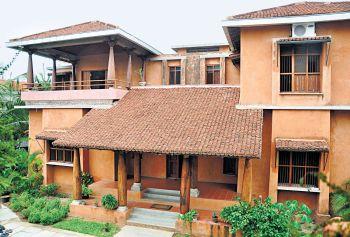Coimbatore :
Oppanakara Street always meant business. The street that stretches from Prakasam bus stop to Mill Road has been a commercial hub for centuries despite the urban legend that the street got its name because many make-up artists lived here. The hustle and bustle of the street has remained constant though the nature of institutions housed here has changed. The financial firms and tax collector’s abode of old have been replaced by textile showrooms and modern banks.
“Oppanakara Street could be one of the oldest and busiest commercial stretches in the country considering that right from the time when it was part of the Vijayanagara Empire and Madurai Nayak rule right into the 15th century,” says Rajesh Govindarajulu of INTACH.![]()
There is no consensus on how the street got its name. Most attribute it to the presence of tax collectors, oppanakarars of Balija Naidu community. In ‘Ithuvo Engal Kovai’ (Is This Our Kovai) published in 1951, Kovai Kizhar C M Ramachandran, who was vice chairman of Coimbatore Municipality, it is mentioned that tax collectors were based here. “Ithuvo Engal Kovai could be seen as one of the earliest historical account of modern history of Coimbatore city. About a century back, Oppanakara Street was to Coimbatore what Mount Road is to Chennai. Apart from Oppanakara Street, the only major commercial centre and seat of public offices was Raja Street,” says C R Elangovan, a local historian.
The Coimbatore guide and directory edited by R Ramalingam in 1954 bears a testimony to the commercial vibrancy of Oppanakara Street as it reveals a long list of banks and private finance firms that were functioning out of the street. These include the then Coimbatore Bhagya Lakshmi Bank Ltd, Madras City Bank Ltd, Dhravya Sahayanidhi Bank Ltd, Modern Bank Ltd and finance firms, Moolchand Kishandas Financiers and Motilal Madhavdas Financiers.
The Athar Jamaath mosque on Oppanakara Street is a heritage structure that was built and maintained by the descendants of perfume sellers who migrated here from Pettai in Tirunelveli after plague stuck their native district. “It was a privilege to have a business establishment on Oppanakara Street and some of the basic amenities like electricity were first provided to this street in Coimbatore city,” says Govindarajalu.
Both Govindarajulu and Elangovan dismiss the claim that Oppanakara Street was a major centre of make-up artistes for drama and theatre groups. The claim is that the street’s name is derived from oppanai kaarar, which means make up artists. “That’s wrong. Oppanakaarar means tax collectors in Tamil and in Telugu, it is oppana vaaru,” Elangovan adds. Perur K Jayaraman, another chronicler of Coimbatore, also says there is no historical evidence to back the claim that Oppanakara Street was a hub of make-up artists. Perhaps, it is an urban legend that grew out of the presence of a devadasi’s residence near the present Oppanakara Street some 200 years ago.
(Beginning this week, TOI takes you through the hidden history of Coimbatore’s interesting and famous streets)
source: http://www.articles.timesofindia.indiatimes.com / The Times of India / Home> City> Coimbatore / by Binoy Valsan, TNN / September 01st, 2013




